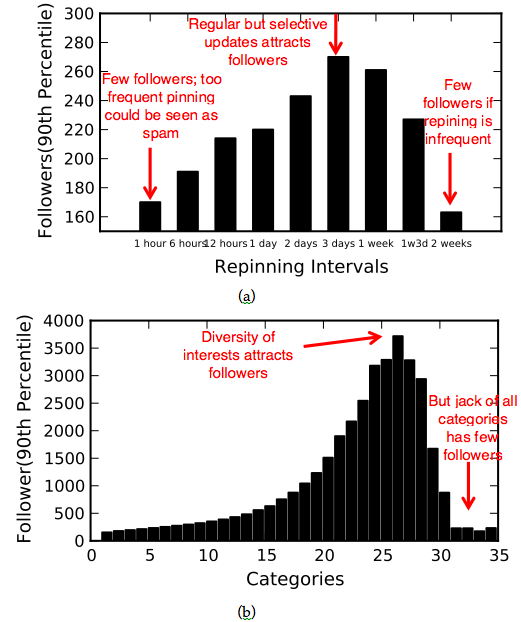This paper looks at how and why users categorise and curate content into collections online, using datasets containing nearly all the relevant activities from Pinterest.com during January 2013, and Last.fm in December 2012. In addition, a user survey of over 25 Pinterest and 250 Last.fm users is used to obtain insights into the motivations for content curation and corroborate results. The data reveal that curation tends to focus on items that may not rank highly in popularity and search rankings. Yet, curated items exhibit their own skewed popularity, with the top few items receiving most of the attention; indicative of a synchronised community. We distinguish structured curation by active categorisation from a more passive bookmarking by 'liking' an item, and find the former more prevalent for popularly curated items. Likes, however, are initially accumulated at a faster pace. Finally, we study the social value of content curation and show that curators attract more followers with consistent activity, and diversity of interests. Interestingly, our user study indicates a divided opinion on the relevance of the social network.
Zhong, Changtao, Sunil Shah, Karthik Sundaravadivelan, and Nishanth Sastry. Sharing the Loves: Understanding the How and Why of Online Content Curation. 7th International AAAI Conference on Weblogs and Social Media (ICWSM), 2013. [PDF]
The Pinterest dataset used in this paper is available for the research community now. Please find out more from here.
(Originally created for the Crowd Research Blog.)
According to Rohit Bhargava, content curation describes the act of finding, grouping, organizing or sharing the best and most relevant content on a specific issue.
On Pinterest (Fig.1), arguably the most popular picture curation website, users can collect and categorize images from other websites by pinning them onto so-called "pinboards". Users can also repin or like images imported by other users. Last.fm has supported pinterest-like curation actions for over 7 years. It allows users to tag (similar to pinning onto a pinboard) or love (similar to like) music they listened.
In this study, we seek to have a first look and understand the how and why of content curation. Based on Pinterest and Last.fm, our analyses employ both quantitative and qualitative approaches. The quantitative study is based on a dataset that includes one-month of curation activities and social graphs on both websites. Our qualitative user study is based on responses from nearly 300 users.

Fig. 1: Curation activities in Pinterest
Our main results are as follows:
Why people curate
1. Curation highlights new kinds of content
Curation-based ranking is quite different from traditional popularity and search ranking (Fig. 2). For example, websites that get a lot of repins or likes in Pinterest are not highly ranked by Alexa traffic ranking or Google PageRank. This is consistent with Clay Shirky's theory that "curation comes up when search stops working".

Fig. 2: Correlation coefficients between curated-based ranking and traditional popularity ranking
2. Different views on social connectivity
Another aspect of Clay Shirky's theory is that the job of curation is to synchronise a community. An evidence for this has been found in our research, which shows that most of curation actions focus on few items. However, our user studies show that most users curate for personal reasons rather than for social good. For example, a popular view is that:
I find the social aspect more useful and interesting with people I know, rather than developing new interactions based on music taste.
How people curate
To understand different content curation actions in different websites, we distinguish them into two classes:
Based on this classification, several observations can be made:

Fig. 3: Top items get more unstructured curation than structured curation. Magenta line indicates R = 0.5, which means unstructured curation equals to structured curation. If R < 0.5, the number of unstructured curation is large than structured curation. Observe that even the top loved or likes tracks have R < 0.5.
What adds social value
Our analysis on this question shows that users who are consistent in curating items and have a diversity of interests get more followers (Fig. 4). This agrees with Rohit Bhargava's theory that the most important part of a content curator's job is to continually identify new content for their audience. An interesting thing that can be observed in Fig 4a is that too short intervals between curating in Pinterest could detract followers. We conjecture that such behavior may be seen as spam.

Fig. 4: Consistent updates and diversity of interests would attract more followers